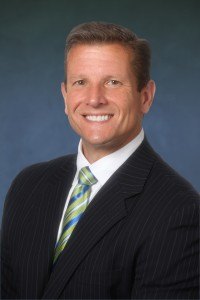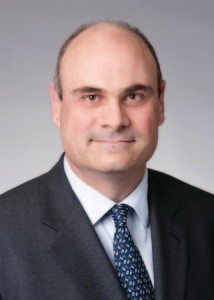Of all the changes detailed in American International Group’s wide-ranging strategic plan, the insurer’s bid to decentralize decision-making among leaders of its operating divisions may be among the most dramatic.
AIG CEO Peter Hancock and AIG Commercial CEO Rob Schimek discussed major organizational changes during the company’s Jan. 26 investor call that will give division heads a lot more power. Plans call for the creation of nine ongoing “modular” business units and a separate “legacy portfolio” composed of nonstrategic assets and businesses that AIG intends to exit or runoff.
AIG identified four P/C units among the nine modules—Liability and Financial Lines, Property and Special Risks, U.S. Commercial, and Europe Commercial. But Hancock said there could be more over time. P/C businesses targeted for runoff were not identified beyond a footnote that said “could include select U.S. Casualty and Specialty.”
The modular structure, which Hancock at one point likened to Google’s Alphabet restructuring, “will decentralize decision-making, provide more accountability to business leaders, and allow for migration to a more variable cost structure,” AIG said in a prepared statement.

Translation, in Schimek’s words: “Historically, the way we were organized, one leader had responsibility for distribution, one for underwriting, one for claims and operations. The ability to rejoin those pieces allows me to have a better view of end-to-end efficiency and the right tradeoffs to make so that we can drive efficiency into the organization.”
Hancock also noted the prospect of selling or taking one or more individual units public at some point in the future. “We are sub-segmenting the operating portfolio over the course of this year in a way which will allow you to judge whether the parts are earning their keep—which ones need to improve faster and which are no longer welcome,” he told investors.
Hancock said that the legacy portfolio (representing $22 billion of an $80 billion capital figure for P/C and life components together) has been producing a 5 percent return for the company, compared to 7.5 percent for the rest of the business.
Focusing on P/C profitability, he also noted that since 2009, AIG has reduced net earned premium for casualty lines by 60 percent, with half of that shrinkage coming over the last four years.
A continued narrowing of focus is part of the strategic plan, he and Schimek said.
Schimek also suggested that entire lines would be on the chopping block.
“We have the ability to decide that we will exit a line of business—and there are some troublesome lines that despite the great efforts we have gone through since Peter arrived, and even before, the truth is we believe we should just exit the line.
In addition, there are places where changed client focus “really could change the trajectory of where we’re moving,” he said, referring to the fact that roughly 78 percent of AIG customers buying one or more U.S. casualty products, actually only buy one.
“So our ability to change our relationship with that buyer is pretty straightforward. It does not create market disruption. And it continues to be consistent with our express vision, which is [that] we want to be our client’s most-valued insurer.
“You have to take a step back and ask, ‘Am I really on the path to achieving that when I have one product with a client, and that product is not a product [that is producing] a successful relationship between AIG and the client?’
“That’s completely within our control, just like deciding to exit something is completely within our control,” Schimek said.
Hancock offered a similar message: “This represents an aggressive shift away from monoline and dual-line clients, where the costs and profitability just simply make it an unattractive proposition,” he said.
Schimek suggested that narrowing AIG’s focus in some of the 90 countries it operates in is also on the table. “The most important thing to this organization is that we grow and maintain our very valuable multinational platform, and we will do that.
“That said, we could narrow our focus in many of these countries where we really don’t have a long-term strategic ability to drive value for our stakeholders,” he said.
Of course, AIG and its executives covered other areas during the call. Messages delivered by Hancock and Schimek seemed clearest for customers buying just one product from the company. They may need to shop elsewhere. There was less direct discussion about the impact of strategic changes to AIG’s workforce.
Below, we highlight additional AIG executive comments that touched upon how actions to improve the property/casualty loss ratio by six points and to cut general operating expenses by $1.6 billion by 2017 might impact both groups involved with the P/C side of the business.
Where are the Exits? Customers Will Know First
How much of the company’s P/C premium is going to be shed from the books?
That’s not something that Schimek was ready to divulge. “It’s very important to us to be a reliable stable part of the commercial insurance business. We have to consider the impact on our brokers, the impact on our clients, etc. So I am very careful here about preannouncing changes without having spoken to our trading partners about what impact they will have on our broader client base.”
Schimek did offer that there are two routes for exiting lines of business. “The way we will exit sometimes will literally be to pick up and move out of a line of business, and sometimes the way we will exit is the way we will price ourselves in the marketplace,” he said.
Alongside the strategy update, AIG also announced $3.6 billion of reserve strengthening for prior years, something that Schimek agreed colors his thinking about underwriting actions.
“Even though we’ve taken significant [reserve] actions in U.S. casualty, it’s a highlight that there are still places in U.S. casualty that are particularly problematic. Some of those lines have informed my plans regarding what is it that we will exit and what is it that we will simply reprice to our targeted returns.”
Still, he wouldn’t be coaxed to reveal what lines those are “without having shared that information with our clients and our brokers.”
“To put it into context, it drives a further reduction of the [net] premiums written for commercial moving forward in the vicinity of another $1.5 billion between 2015 and 2016, he said, noting that changed reinsurance buying strategies will also drive down net volume.
It’s Not Just About Icahn; All Stakeholders Matter
Hancock said, “This company is where it is today, I believe, because in our recovery from the crisis, we recognized the importance of all our stakeholders if we were going to realize the full franchise value of this company. All stakeholders are important and inform my views about these strategic actions. The pace, nature and sequencing will reflect all stakeholders as we return a very substantial amount of capital”—a planned amount of $25 billion.
Blending Old and New
Asked about a $1 billion planned reduction in “people-related expenses,” and about how AIG would manage the corresponding loss of institutional knowledge and client relationships that could ultimately have an adverse impact on loss ratios, Hancock responded by saying the workforce reduction effort has been planned for a while and that key veterans would remain.
In his words, “We’ve been going through a very thorough talent analysis over the course of the last four years. One of the great things that my predecessor Bob Benmosche put in place was rigorous performance evaluation. So we have a really good idea of the relative strengths and weaknesses of all of our people.

“So we think that these savings come through a very-well-thought through and planned optimization of our human capital.”
“Any transition will have short-term collateral damage. We know that. There’s going to be some lost accounts here and there, some frustrated clients here and there. But the feedback we’re getting from our clients—and that’s what we care about most—is that the changes we’re making here is a much more valuable proposition to them than the AIG of old that was more fragmented and not coordinated and integrated in the way in which we solve….important problems.
“So I think we’re delivering a more integrated value proposition with a team of veterans, as well as new thinkers delivering the best that we have.”
More Outsourcing and Shared Services
Addressing more questions on expense savings—and how AIG will move costs down by $1.6 billion—Hancock referred to reductions in headcount in senior personnel, announced back in November. “We’re not done yet” with cost cutting, he said. “We’re continuing to implement the simplification of the operations of the company.”
Part of the plan is “an increased focus on switching from fixed to variable costs because the strategic flexibility to divest and reshape the company is greatly assisted by a more modular support structure.”
“Our use of outsourced providers, as well as using our shared services where it makes sense, gives us more ability to have costs that are linked to volumes of transactions rather than a fixed cost which drives us to do more volume regardless of margin.
“We want to have more flexibility to flex up and flex down our volume based on the cyclicality of different markets we operate in so that we can maintain margins after costs rather than feeling any fixed cost pressure to grow.”





















 First Atlantic Hurricane Forecast for 2026 Suggests Season Close to 30-Year Norm
First Atlantic Hurricane Forecast for 2026 Suggests Season Close to 30-Year Norm  Why ‘Good Enough’ Is Killing Insurance: The Hidden Cost of Satisficing
Why ‘Good Enough’ Is Killing Insurance: The Hidden Cost of Satisficing  Good Times for U.S. P/C Insurers May Not Last; Auto Challenges Ahead
Good Times for U.S. P/C Insurers May Not Last; Auto Challenges Ahead  Nearly Half of 100 Largest P/C Insurers Destroy Value: ACORD
Nearly Half of 100 Largest P/C Insurers Destroy Value: ACORD 







